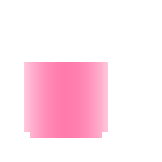


The Medicina Latina
2 oz
A type of mezcal distilled exclusively from the blue agave plant, primarily around Tequila, Mexico.
2 tsp
A syrup produced by bees (apis). Pure honey is 82% sugar and very viscous, if you add 64g water to every 100g honey you can make a thinner honey syrup that will substitute (with respect to sweetness) for simple syrup in any recipe, equivalent to 1.1:1 honey to water by volume. We try to always use 1:1 syrups by mass. However, most sources measure honey syrups by volume, this tends to make comparing recipes across sources that use honey syrups complicated, we tried to state what the original source uses in the recipe text. If no extra information is given, assume the syrup to be 1:1 by volume (eq ~1.4:1 by mass). Proteins in natural honey provide structure to bubbles in shaken drinks.
2 tsp
A syrup with ginger root flavoring. Make it yourself: Combine 120mL fresh ginger juice, 100g superfine sugar (about 2:1.5 by mass). Or you can also boil some ginger slices in a simple syrup mixture. We always assume a 1:1 syrup unless otherwise noted in the recipe itself.
0.75 oz
The second most common juice used in cocktails. This citrus juice is about 6% acid; 4% from citric and 2% from malic, with small amounts of succinic acid (this is what gives it a little bloody taste). Lime juice should be used the day it is squeezed, some like it freshly squeezed and others like it a few hours old.
1 tsp
A young mezcal that has not been aged for more than 2 months.
1 piece
A crystallized sweetened candy made from ginger. You can make it yourself; Google it!
Combine all the ingredients in a cocktail shaker with ice and shake until chilled. Strain into a rocks glass with 1 large ice cube. Carefully float a bar spoon of mezcal on top. Garnish with a piece of candied ginger. #shake #ontherocks
A variation on Sammy’s Penicillin.
Tart
Smoky